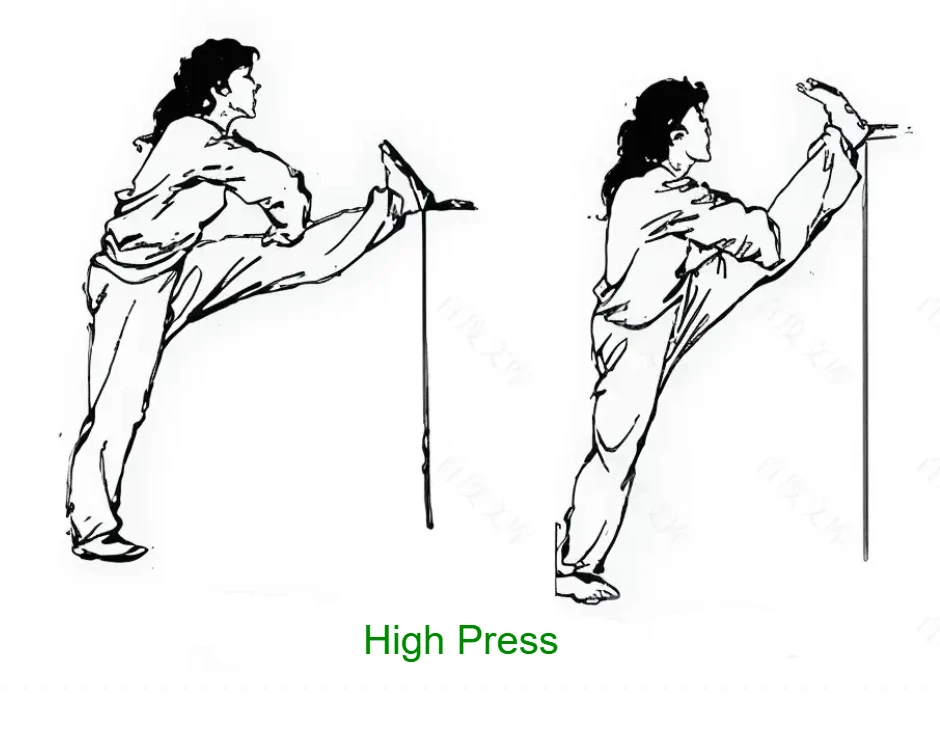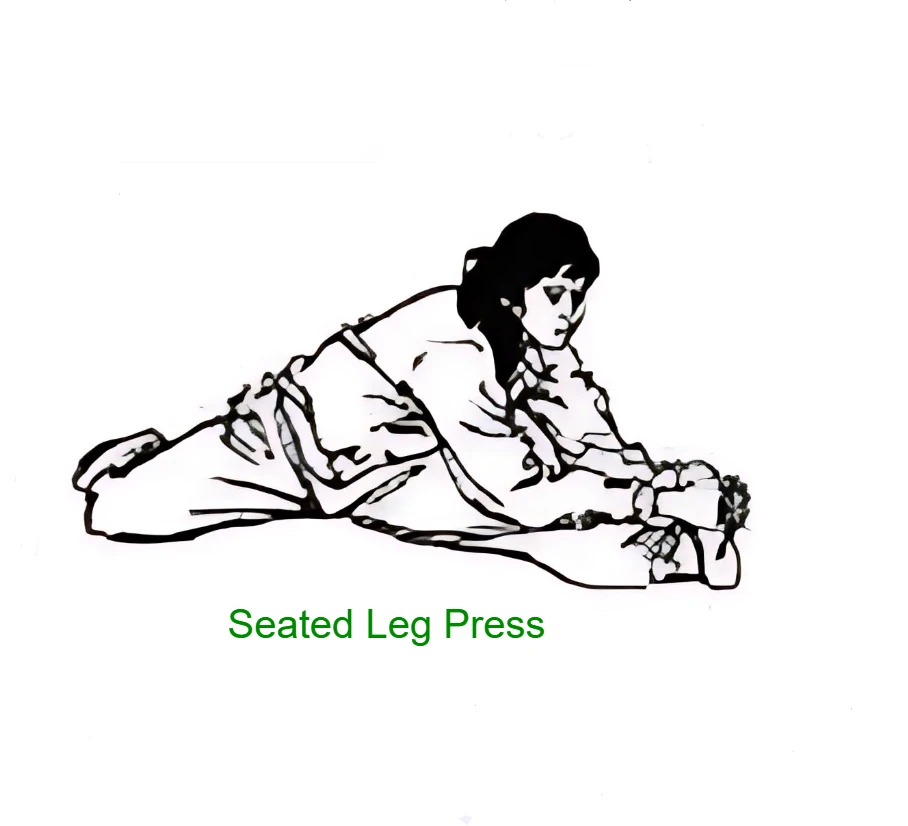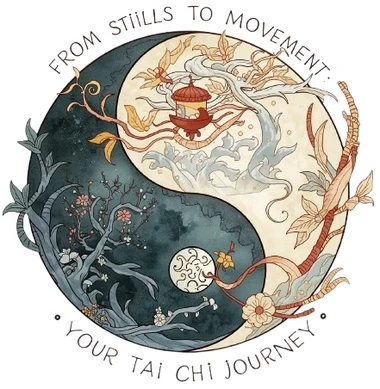Hello everyone,
Welcome to the Tai Chi Wuji forum! Today, we’re diving into an essential Taiji practice—Leg Stretching Exercises. Whether you're new to martial arts or looking to refine your skills, these stretches will help improve flexibility, strength, and overall body control. Let’s break it down step by step, so you can practice safely and effectively.
Why Leg Training Matters
In martial arts, leg strength and flexibility are crucial. They help you perform movements with precision, boost physical fitness, and prevent injuries. Let’s explore some foundational Taiji leg stretches that you can easily incorporate into your routine.
Types of Taiji Leg Stretches
1. Forward Leg Press
Position: Stand facing a support (like a bar or wall). Place one leg forward with your heel on the support, toes pulled back, and knee straight. Keep the other leg firmly on the ground.
Movement: Gently press your upper body forward toward your raised foot. Use your hands to hold your knee or toes for support. Repeat this motion, gradually increasing the range.
Goal: Try to bring your chin as close to your toes as possible.
Variations:
High Press: Place your foot on a higher support.
Low Press: Keep your foot on the ground.


2. Side Leg Press
Position: Stand sideways to a support. Raise one leg and place it on the support, keeping your toes pulled back. Raise the arm opposite to your raised leg, and place the other hand on your hip or outer thigh.
Movement: Slowly lean your upper body toward the raised leg. Repeat, increasing the stretch over time.
Goal: Aim to bring your head closer to your toes.
Tip: Switch legs and repeat on the other side.


3. Squatting Leg Press
Position: Take a wide stance. Bend one knee deeply into a squat, placing your hand on the bent knee. Extend the other leg sideways, keeping it straight, and hold the outer foot with your hand.
Movement: Gently lean your upper body toward the extended leg.
Goal: Try to bring your head close to the toes of the extended leg.
Tip: Alternate legs and repeat.

4. Seated Leg Press
Position: Sit on the floor with both legs extended and spread apart. Pull your toes back toward your body.
Movement: Lean your upper body forward, using your hands to press on your knees or hold your toes.
Goal: Bring your chin as close to your toes as possible.
Tip: You can focus on one leg at a time or stretch both together.


Key Tips for Success
Maintain Proper Form:
During forward presses, keep your back straight, chest open, and hips tucked.
During side presses, engage your chest and glutes.
Start Slow:
Begin with small, controlled movements and gradually increase intensity. Never force a stretch.
Recovery Matters:
After stretching one leg, gently shake it out before switching to the other.
Stay Aligned:
Keep both legs straight during forward and side presses. During squatting presses, ensure your feet are flat on the ground. In seated stretches, try to widen your legs as much as comfortably possible.
Common Mistakes to Avoid
Rounding your back, lowering your head, or bending your knees
Welcome to the Tai Chi Wuji forum! Today, we’re diving into an essential Taiji practice—Leg Stretching Exercises. Whether you're new to martial arts or looking to refine your skills, these stretches will help improve flexibility, strength, and overall body control. Let’s break it down step by step, so you can practice safely and effectively.
Why Leg Training Matters
In martial arts, leg strength and flexibility are crucial. They help you perform movements with precision, boost physical fitness, and prevent injuries. Let’s explore some foundational Taiji leg stretches that you can easily incorporate into your routine.
Types of Taiji Leg Stretches
1. Forward Leg Press
Position: Stand facing a support (like a bar or wall). Place one leg forward with your heel on the support, toes pulled back, and knee straight. Keep the other leg firmly on the ground.
Movement: Gently press your upper body forward toward your raised foot. Use your hands to hold your knee or toes for support. Repeat this motion, gradually increasing the range.
Goal: Try to bring your chin as close to your toes as possible.
Variations:
High Press: Place your foot on a higher support.
Low Press: Keep your foot on the ground.


2. Side Leg Press
Position: Stand sideways to a support. Raise one leg and place it on the support, keeping your toes pulled back. Raise the arm opposite to your raised leg, and place the other hand on your hip or outer thigh.
Movement: Slowly lean your upper body toward the raised leg. Repeat, increasing the stretch over time.
Goal: Aim to bring your head closer to your toes.
Tip: Switch legs and repeat on the other side.


3. Squatting Leg Press
Position: Take a wide stance. Bend one knee deeply into a squat, placing your hand on the bent knee. Extend the other leg sideways, keeping it straight, and hold the outer foot with your hand.
Movement: Gently lean your upper body toward the extended leg.
Goal: Try to bring your head close to the toes of the extended leg.
Tip: Alternate legs and repeat.

4. Seated Leg Press
Position: Sit on the floor with both legs extended and spread apart. Pull your toes back toward your body.
Movement: Lean your upper body forward, using your hands to press on your knees or hold your toes.
Goal: Bring your chin as close to your toes as possible.
Tip: You can focus on one leg at a time or stretch both together.


Key Tips for Success
Maintain Proper Form:
During forward presses, keep your back straight, chest open, and hips tucked.
During side presses, engage your chest and glutes.
Start Slow:
Begin with small, controlled movements and gradually increase intensity. Never force a stretch.
Recovery Matters:
After stretching one leg, gently shake it out before switching to the other.
Stay Aligned:
Keep both legs straight during forward and side presses. During squatting presses, ensure your feet are flat on the ground. In seated stretches, try to widen your legs as much as comfortably possible.
Common Mistakes to Avoid
Rounding your back, lowering your head, or bending your knees
1
